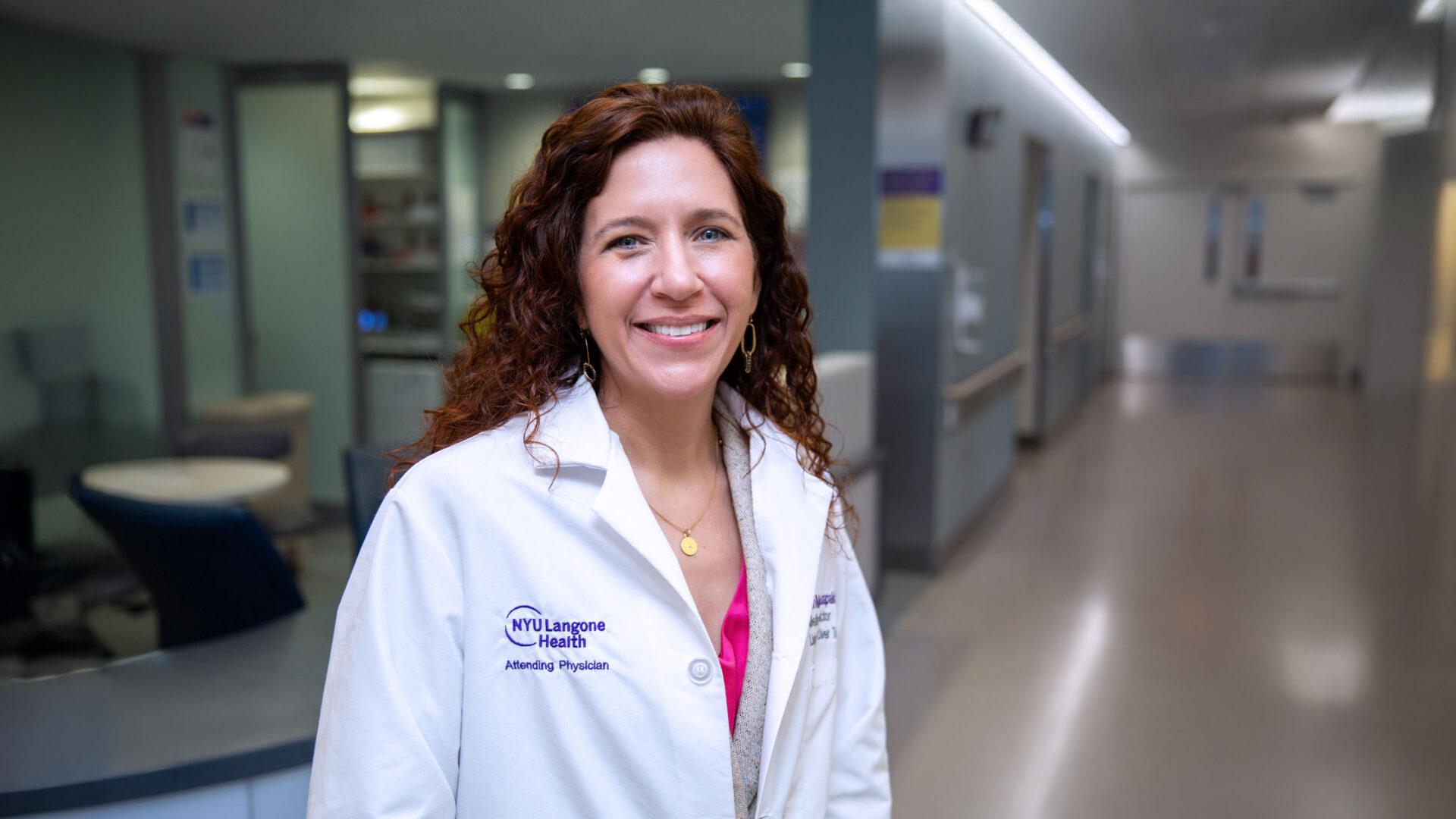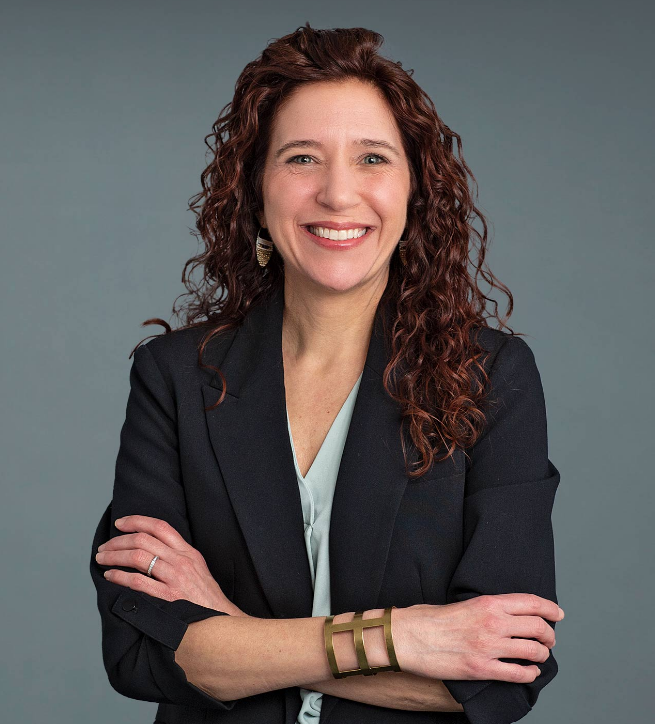With demand for liver transplants outpacing deceased donor supply, living donor transplants are helping to close the gap.
AnnMarie Liapakis, MD, serves as a transplant hepatologist in the Division of Gastroenterology and Hepatology and medical director of the Living Donor Liver Transplant Program, part of the NYU Langone Transplant Institute. Alongside surgical director Adam Griesemer, MD, the program has achieved a 100 percent one-year survival rate for living donor liver transplant recipients. The accomplishment builds on the success of NYU Langone’s broader Liver Transplant Program, led by Patrick G. Northup, MD, and Karim J. Halazun, MD, which ranks among the top five nationally for transplant rate and leads New York State in outcomes.
A national leader in the field, Dr. Liapakis chairs the executive committee of the Living Donor Community of Practice for the American Society of Transplantation (AST), serves as co-chair elect of the AST Living Donor Circle of Excellence, and is education lead for the Liver Transplantation and Surgery Special Interest Group of the American Association for the Study of Liver Diseases.
Here, she shares how NYU Langone is scaling living liver donation through surgical innovation, donor care, and outreach strategies.
Physician Focus: NYU Langone has significantly expanded its Liver Transplant Program and living donor liver transplant services over the past three years. Tell us about this effort.
Dr. Liapakis: Minimally invasive surgical techniques have greatly evolved, and our highly skilled surgical team has been at the forefront of this innovation. We offer open, laparoscopic, and robotic living donor surgery, depending on what’s appropriate for the donor and recipient. In addition, our transplant anesthesia team uses catheter-based regional anesthesia pain management to minimize discomfort.
Our goal is to minimize and adequately manage the pain associated with this surgery so donors and recipients recover with the least amount of inconvenience. Our approach offers excellence in both deceased and living donor transplant.
Physician Focus: What has driven the success of the NYU Langone’s living donor liver transplant program?
Dr. Liapakis: Only about one third of liver transplant programs in the U.S. offer a living donor program. It requires deep surgical expertise, an experienced, multidisciplinary team, and the leadership to support excellence. NYU Langone has made the investment to build that team, having recruited world-class liver transplant surgeons, hepatologists, and other specialists.
I was brought on to develop the medical care model specific to living donation, for both the donor and recipient. This team expertise, combined with our resources and comprehensive care pathways, allows us to provide a high-performing living donor program.
We also excel in educating and supporting patients to find a living donor when they might not be thinking of one. We provide a comprehensive evaluation of donor candidates and help them optimize their health to donate safely.
Approximately 16 percent of patients on a liver transplant waiting list in the U.S. do not make it to transplant. Our commitment to patients is to prevent this from happening, whether through living donor liver transplant or expanding deceased donor organ access.
Physician Focus: Can you tell us more about the program’s approach to identifying and preparing living donors?
Dr. Liapakis: We’re very proactive about raising awareness and commited to donor safety and wellbeing. We speak to patients about how to find a donor, provide them tangible resources, and work within the transplant community and patient advocacy organizations to conduct educational events.
Anyone in good health and under the age of 60 can be considered as a living donor, and we work hard to not decline a motivated donor when we feel we can ensure their safety. Toward this effort, we offer formalized programs for donors who want to overcome health challenges that might prevent them from giving their liver. Donors with heart disease and chronic illnesses aren’t eligible, but those who are obese, smoke, or have conditions such as high cholesterol, pre-diabetes, or anxiety and depression can enroll in these programs, including the PeriOperative Weight Evaluation and Reduction (POWER) Clinic, run by Babak J. Orandi, MD, PhD, and the Tobacco Cessation Program.
We also encourage patients to take advantage of free support from external organizations like Project Donor, which offers weight management, smoking cessation, and mental health resources. To reduce the financial burden, we connect donors to the National Living Donor Assistance Center and Donor Shield, which can reimburse lost wages, travel, and dependent care costs. We aim to make living organ donation financially neutral.
Physician Focus: Paired exchange is a growing area of living donation, and you recently co-led an AST conference on the topic. What were the key discussions and takeaways?
Dr. Liapakis: The conference focused on identifying barriers to the expansion of living donor solid organ paired exchange and developing impactful and feasible mitigation strategies. The emerging experience in liver paired exchange and the vast experience in kidney paired exchange—originally pioneered by NYU Langone’s very own Robert Montgomery, MD, PhD—were reviewed and discussed, with lessons extrapolated to the liver space. Education was a recurring theme across mitigation strategies.
While we haven’t yet facilitated a paired exchange here, we’re prepared. We are currently evaluating a potential liver donor interested in donating to her lifelong friend via paired exchange.
Physician Focus: Is there a recent living donor transplant case that stands out as especially meaningful to you?
Dr. Liapakis: In late 2023, a 49-year-old man with primary sclerosing cholangitis was very sick and waiting on the transplant list. Initially, he wasn’t considering a living donor. We spoke to him about the option, and his older brother was a match. Both men are doing well and now speak at our patient education events. Another example is a mother and daughter who traveled from the Dominican Republic for care with our Latino Liver Program.
Physician Focus: What is the future of living donor transplant programs?
Dr. Liapakis: The safe expansion of living donor liver transplant is key to helping more patients achieve lifesaving liver transplant. Living donor transplant decreases waitlist mortality, allows persons to be transplanted timely with less risk of complication and frailty while waiting, and—at experienced transplant centers—provides superior long-term outcomes for persons with end-stage liver disease.
Creating a culture of support for the living donor concept is key to its continued success. Education is powerful as many people want to help but there are still misconceptions regarding liver disease and transplant, and a lack of awareness of the possibility and impact of living donor liver transplantation. Utilizing technologies and platforms for information sharing is important.






